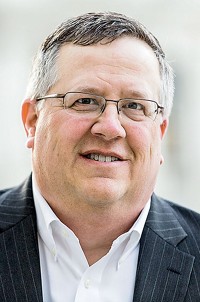Advertisement
Grab your lab coat. Let's get started
Welcome!
Welcome!
Create an account below to get 6 C&EN articles per month, receive newsletters and more - all free.
It seems this is your first time logging in online. Please enter the following information to continue.
As an ACS member you automatically get access to this site. All we need is few more details to create your reading experience.
Not you? Sign in with a different account.
Not you? Sign in with a different account.
ERROR 1
ERROR 1
ERROR 2
ERROR 2
ERROR 2
ERROR 2
ERROR 2
Password and Confirm password must match.
If you have an ACS member number, please enter it here so we can link this account to your membership. (optional)
ERROR 2
ACS values your privacy. By submitting your information, you are gaining access to C&EN and subscribing to our weekly newsletter. We use the information you provide to make your reading experience better, and we will never sell your data to third party members.
Green Chemistry
Empowering a sustainable world
These members of the new guard of scientists are using systems thinking to make green chemistry mainstream
by Melody Bomgardner and Rudy Baum
July 13, 2018
Last month, around 500 chemists and related scientists, businesspeople, and policy experts gathered in Portland for the 22nd Green Chemistry & Engineering Conference, hosted by the ACS Green Chemistry Institute.
This year’s conference included the usual deep dives into making chemical synthesis safer and more efficient. But several sessions took a broader view to see how green chemistry can make everyday consumer goods—not just eco-branded products—sustainable. That takes more than good chemistry—it requires the ranks of green chemists to grow, science-based environmental and health policies to flourish, and manufacturing industries to change how they operate.
C&EN caught up with GC&E speakers Joe
Joe DeSimone
DeSimone is CEO and

Can you tell us about what you’ve been doing recently at Carbon?
As
Our digital fabrication technique for polymer parts is really brand new. It’s a big leap for the manufacturing of polymers, which today are mostly injection molded. I make the analogy to 2-D printing: In the old days, we had mimeograph machines that required a master template to make lots of copies. Then digital laser printers changed everything—how people work, how they collaborate, and even the supply chain. Laser printers enabled print on demand. Now we’re driving a lot toward production, and we build all our own 3-D printers.
We’ve established a global chemical supply chain through a multitude of partners, and that is growing. At the end of
Because you’ll be speaking at a green chemistry conference, what do you see as the main environmental benefits of 3-D printing?
We call it digital sustainability. Because we have a digital fabrication technique, we can do important things like
Also, we know polymers densify with time; they age, hydrolyze, and fade. For preservation, polymer parts are stored for decades in climate-controlled buildings that consume energy. Wouldn’t it be better to have a warehouse in the clouds and make
Carbon is not your first manufacturing start-up. What are some key things you have learned about manufacturing that you think academics and students interested in green chemistry should know or understand?
You have to think about implementation. You can do all the things you want to do in the lab and publish papers, but if no one implements it, it will do no one any good. This really leads to entrepreneurship and thinking financially about what it takes to really move the needle. That means knowing the whole product
Being a systems thinker means leveraging both your liberal arts and science training. Like if you were an earthquake engineer in Haiti, you have to understand the language, culture, and politics of the place. You need real breadth of thinking. As
As a chemist, inventor
What is quite clear is we as a society have lots of interesting problems to work on—environmental stewardship and the role the chemical industry plays. Not a week goes by that people aren’t producing a plastic that whales get entangled in or generating lithium-ion batteries that catch fire. It’s about being generally aware.
Chemists have a toolbox, but they often don’t own the problem. Instead, the problems may be owned by physicians or
News headlines these days point to materials of convenience, like plastics and perfluorinated chemicals, that persist in the environment. In your opinion, is it still green chemistry if we follow green chemistry principles to synthesize materials, but they persist in the environment
At Carbon, we’re going to transform how polymers are made into parts. But recyclability and biobased feedstocks are important to us to prevent those parts from later becoming pollution. Green chemistry is important in principle, but we have to look at a systems level to make sure that what we do is right on all levels.
Edward Brush and Grace Lasker


Brush, a chemistry professor at Bridgewater State University, and Lasker, a Senior lecturer
How do you think green chemistry connects to environmental justice
Green chemistry is the science of making smart choices in how we design, make, use, and dispose of chemicals and chemical products. We believe that innovative green chemistry technologies have excellent potential to offer solutions to achieve equity and environmental justice.
Advertisement
What do you hope this symposium accomplishes
The feedback has helped us to better design our symposia into something that is productive for the speakers, participants, and the discipline. For example, at this year’s conference, we’re following our Monday afternoon symposium with a Tuesday evening workshop to explore topics in greater depth. Furthermore, we will be exploring how the American Chemical Society and the chemical enterprise can contribute to achieving the United Nations Sustainable Development Goals.
What are the main points you hope symposium participants took away from yesterday’s session
Second, we are interested in everyone learning how the innovative technologies that have come out of green and sustainable chemistry may have a positive impact in achieving equity and environmental justice and contribute to a more sustainable chemical enterprise. Next, for educators, we hope to demonstrate how to integrate these topics into the chemistry classroom. Finally, we want to ask what types of research collaborations might be catalyzed by this symposium.
How does the work you do at each of your universities intersect with environmental justice and social equity
Lasker: Our health studies program is supported by a mission that incorporates community engagement and social justice with principles of public health and equity. I teach using a systems-thinking approach to health, incorporating green chemistry, environmental health, toxicology, and social determinants of health into all my classes. Scientists have a key role to play in helping achieve global health equity and protecting the health of our planet as well. My work helps bridge both sides—science and public health—toward a common goal of social and environmental justice, starting in the classroom with our future agents of change.
Julie Zimmerman

Zimmerman is a professor and senior associate dean of chemical and environmental engineering, forestry, and environmental studies at Yale University. She is also Deputy
What is the meaning of the title of your talk, “Nourishing the Green
In a recent paper (Green Chem. 2018, DOI: 10.1039/c8gc00482j), a team of which I was proud to be a part did a
While there have been literally hundreds of reviews within the field of green chemistry, we believe this is the first metareview [an analysis organized by activity within each principle that discusses tools and metrics available, as well as future challenges for the field]. It shows an astounding productivity in terms of scientific discovery that will likely amaze anyone who looks at it. However, taking the metaphor of the tree another step, every tree needs to be nourished, or it will die. Trees need light (awareness and education) and nutrients (funding and diverse perspectives). And no tree is alone in the forest. What are the other trees that interact with and influence the health of the Green
What are the main points you hope attendees take away from your lecture
Having a healthy tree and a healthy forest requires more than leaves. Our field requires more than folks just publishing papers. It requires an infrastructure and a community, with some people playing very different roles ranging from
In a 2015 Science editorial you
Most scientists are still trained in reductionism. Reductionism first, last, and always. No wonder—reductionism has transformed the world in the past 200 years and brought about modern life. However, it has also been one big part of bringing about unintended consequences.
Sustainability is a complex nesting of systems in systems that doesn’t lend itself to a reductionist-only approach. Yet we still try to fit the square peg of quantitative metrics into the round hole of sustainability. This is a difficult transition for people to make. People are not used to this. It’s out of their comfort zone. It doesn’t fit with existing models. The experts in the old ways of thinking are not the experts in the new ways of thinking. Intellectual inertia is a bear.
One of your interests is policy design and analysis for sustainability, particularly related to water use and corporate environmental behavior. What kinds of policy design are most effective in influencing corporate environmental behavior?
Just as there needs to be innovation in our science, technology, products, and processes, there also needs to be innovation in our policy and methods of policy-making. In the same way that we need to apply systems thinking to product design and molecular design, we need to apply it to policy design. In that way, the question becomes not, “How do you influence corporate behavior?” but rather, “What is the set of incentives, rewards, and drivers where the interests and desires of corporations, consumers, public health advocates, environmentalists, and the environment are aligned rather than structured as a zero-sum game?”
From your perspective, how have attitudes, both academic and corporate, toward green chemistry and engineering changed in the past decade
In academia, there are thought leaders and institutional leaders who are now in place to implement the





Join the conversation
Contact the reporter
Submit a Letter to the Editor for publication
Engage with us on Twitter